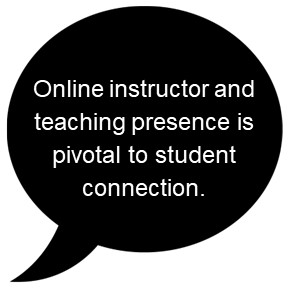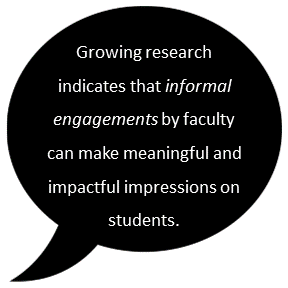Author: Charlotte Jones-Roberts, University of Central Florida
Editor: Dr. Denise Lowe, University of Central Florida
Dear ADDIE,
In my recent classes, I’ve noticed students being more open about feeling anxious in an online classroom. I’m worried these students aren’t getting the most out of class due to the anxiety they feel. Are there any design affordances or teaching strategies I can use to help these students?
Signed,
Deep Breaths
Hi Deep Breaths,
Thanks for your question! You are keen to notice an increase in student anxiety because overall anxiety has been on the rise steadily over the past decade. Anxiety is also found to be a major factor which affects student success and withdrawal rates (Ali & Smith, 2015).

First and foremost, it is pivotal to follow accessibility requirements. If a student has registered with institutional accessibility services, there is usually a required accommodation for students such as extra time for tests and assignments.
However, it is entirely possible that a student is still experiencing feelings of anxiety. Luckily, there is some research that reflects strategies to help students with feelings of anxiety in online courses.
- Make things clear from the start! Studies such as Conrad (2002) and Abdous (2019) have indicated that most feelings of anxiety occur at the beginning of the course. Ensuring clarity and organization of the course schedule, assignments, grading point distribution, and scheduled meetings from the beginning of the course can mitigate these initial concerns. Steer clear of surprises!
- Take out the guess work. Anxieties can be high when a student doesn’t know what to expect in tackling a complicated task (Abdous, 2019). Use low stakes practice activities, clear rubrics, and offer sample assignments to show your students how to do their best.
- Show them you’re a human, not an online robot. Increasing your teaching presence online is pivotal to connection and alleviating anxieties surrounding an online course (Barcelona et. al., 2023). Send video announcements to check in with the weekly assignments. For video office hours, make yourself easily available with an app like Calendy that allows the students to schedule a 15-minute appointment without becoming burnt out making appointments.
In the end, every student is different. It may also be helpful to have beginning, midpoint, and end of course surveys to see how you can meet the needs of each individual student and class group.
What other ideas regarding strategies for relieving student anxiety have you applied or are exploring at your higher education institution? Please share your thoughts with our TOPkit community on LinkedIn!
Best,
ADDIE
References
Abdous, M. H. (2019). Influence of satisfaction and preparedness on online students’ feelings of anxiety. The Internet and Higher Education, 41, 34-44.
Ali, A., & Smith, D. (2015). Comparing social isolation effects on students attrition in online versus face-to-face courses in computer literacy. Issues in Informing Science and Information Technology, 12(1), 11-20.
Barcelona, A. B., Baraquiel, J. A., Cupo, E. B., Ferreras, E. T., Galarion, C. G., Yabut, L. A., & Zapanta, J. R. A. (2023). Statistical anxiety and teacher presence among graduate students: A moderation analysis. American Journal of Education and Learning, 8(1), 76-87.
Conrad, D. L. (2002). Engagement, excitement, anxiety, and fear: Learners’ experiences of starting an online course. The American journal of distance education, 16(4), 205-226.


